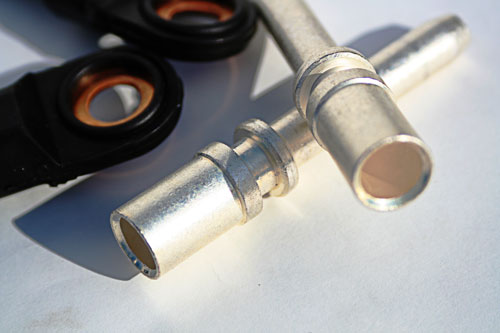Tips
General overview
Aquamatic
Electrolyte circulation
Disposal
Commissioning
Charging and discharging
Storage
Maintenance and care
Cleaning
Repairs and regeneration
Safety information
Malfunctions
Aquamatic - automatic fill system for traction batteries
General information:
Fill the battery immediately after charging while at operating state temperature: once per week during single-shift operation, every three days for multi-shift operation.
Monitor the fill level until the end and wait until the flow-through indicator stands still. Disconnect filling device and battery after that.
Model BFS III for traction batteries:
The battery water re-fill system BFS is used for automatic settings of the nominal electrolyte level. Degassing apertures have been installed to dissipate gases created during the charging process. In addition to the visual fill level display, the plug system is also equipped with a diagnostic opening to measure the temperature and density of electrolytes. All battery cells of type series PzS and PzB can be equipped with the BFS fill system.
The hose connection of the individual BFS plugs makes it possible to refill water via the central locking coupling.
Application:
The battery water re-fill system BFS is used for traction batteries of forklift vehicles. The water re-fill system is connected to a central water line for water supply. This connection as well as the hose connections of the individual plugs are established with a soft PVC hose. The hose ends are clipped onto the hose connection spouts of the T-connectors.
Function:
In combination with the floater and the floater linkage, the valve inside the plug controls the re-fill process in terms of the required amount of water.
For the BFS system, the valve is closed with 2.5 times the buoyancy when the max. fill level has been reached, interrupting the water supply. This is done through a lever system via the floater and the floater linkage.
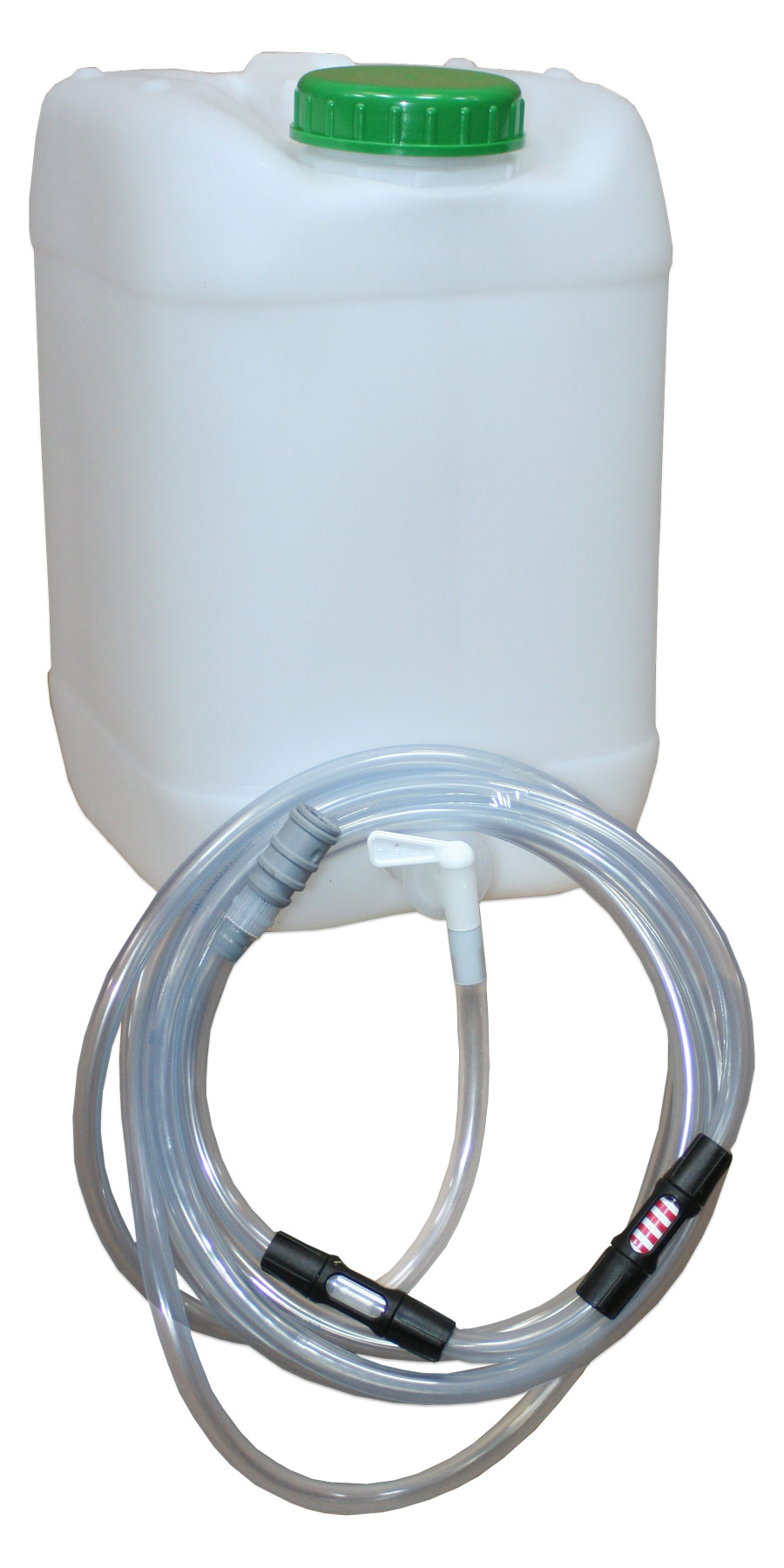 Filling (manual/automatic):
Filling (manual/automatic):
The batteries should be filled with water shortly before completing the full battery charge to ensure that the re-filled water amount is properly mixed with the electrolytes. During normal operation, it is generally sufficient to re-fill once per week.
Setting the correct connection pressure:
The water re-fill system must be operated as such that the water line has a water pressure between 0.3 and 1.8 bar. The BFS system has a pressure operational range from 0.3 bar to 3.8 bar. Any deviations from the pressure range may impair the functional safety of the systems. This wide pressure range allows for three types of re-filling.
Falling water
Depending on the water re-fill system used, the height of the storage container must be selected. BFS system set-up height: 3 m to 18 m above battery surface.
Pressure water
Setting of the pressure reduction valve. BFS system: 0.3 bar to 1.8 bar.
Water re-fill trolley
The submersion pump located in the storage container of the water re-fill trolley creates the required fill pressure. There may not be a difference in height between the standing plane of the water re-fill trolley and the battery standing plane.
Filling period:
The filling period of the batteries depends on the operating conditions of the battery, on the ambient temperature and the type of filling as well as the pressure. The filling period ranges from approx. 0.5 to 4 minutes. The water supply line must be disconnected from the battery after the manual re-fill process.
Water quality:
Only re-fill water may be used to fill batteries which corresponds to the quality as per DIN 43530 Part 4. The re-fill system (storage container, pipelines, valves etc.) may not contain any impurities which could impair the functional safety of the BFS plug. For safety reasons, it is recommended to install a filter element (option) with a max. aperture of 100 to 300 μm into the main supply line of the battery.
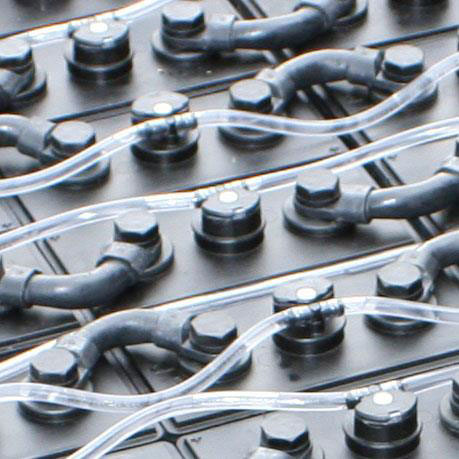
Battery piping:
The piping of the individual plugs must be established along the existing electric circuitry. No changes may be made.
Operating temperature:
The limit temperature for the operation of traction batteries has been specified at 55°C. The battery will be damaged in case of higher temperatures. The battery fill systems may only be operated at a temperature range between > 0°C and max. 55°C.
ATTENTION: Batteries with automatic water re-fill systems may only be stored in rooms with temperatures > 0°C (otherwise danger of system freezing).
Diagnostic opening
The water re-fill systems are equipped with a diagnostic opening with a diameter of 7.0 mm for BFS plugs to enable easy measuring of acid density and temperature.
Floater
Depending on the cell structure and type, different kinds of floaters are used.
Cleaning
The plug systems may only be cleaned with water.
No parts of the plugs may come into contact with solvent materials or soaps.
Accessories:
Flow indicator
A flow indicator can be installed in the water supply line on the battery side in order to monitor the filling process. During the filling process, the small paddle wheel is rotated through the flowing water. After completion of the filling process, the wheel stops which indicates the end of the filling process.
Plug jack
To disassemble the plug systems, only use the corresponding special tools (plug jack). To prevent damages to the plug systems, the plugs must be lifted out with great care.
Clamping ring tool
Using the clamping ring tool, a clamping ring can be pushed on the tube clip to increase the contact pressure of the piping and loosened again to reduce the pressure.
Filter element
For safety reasons, a filter element can be installed in the battery supply line for battery water supply. This filter element has a max. aperture profile ranging from 100 to 300μm and is designed as hose filter.
Locking coupling
The water is supplied to the water re-fill systems (BFS) through a central supply line. It is connected with the water supply system of the battery loading spot via a locking coupling system. A locking nipple is installed on the battery side. A locking coupling must be installed on the water supply side.
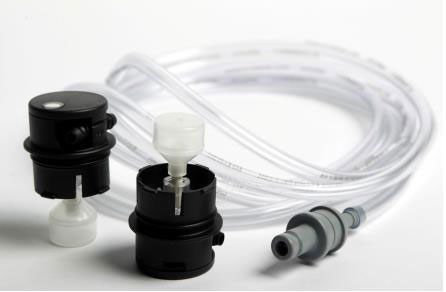
Functional data:
D- Flow amount of the open valve with an incoming pressure of 0.1 bar: 350 ml/min
D1 - max. permitted leakage rate of the closed valve with an incoming pressure of 0.1 bar: 2ml/min
T - Permitted temperature range: 0°C to max. 65°C Pa - Work pressure range BFS system: 0.3 to 1.8 bar
Electrolyte circulation EUW
Required additional accessories
Battery:
One air supply tube per battery cell as well as the corresponding screw connection and the coupling system.
Charging device:
A pump module with pressure monitoring integrated in the charging device for switching the charging factor from nominally 1.2 to a range between 1.05 and 1.07.
Mode of operation:
When the battery begins charging, dust-free air is supplied to each cell through the air supply tube. The electrolytes are circulated by a “liquid pump” using the mammoth pump principle. That way, the same electrolyte density values exist from the beginning of the charging cycle across the entire electrode length.
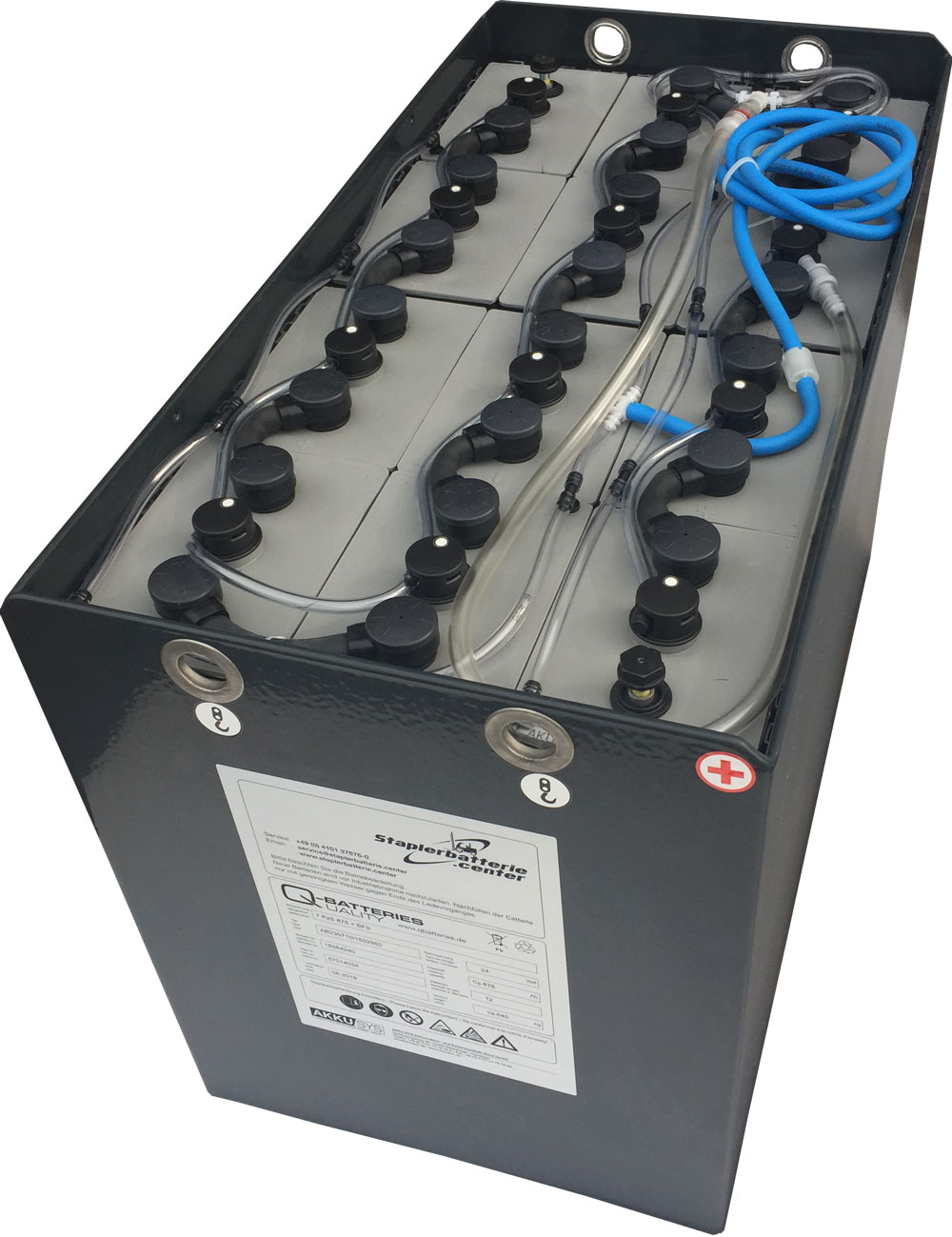
Pump:
Depending on the number of cells in the battery group, pump capacities of 800, 1000, 1500 l/h. With the exception of replacing the air filters (depending on the degree of air pollution, 2-3 times annually), the pumps are maintenance-free. Where needed, for example in case of an unexpected trigger of the pressure monitor, the filters must be inspected, and the filter cotton replaced, if necessary. The pump is activated at the beginning of the battery charging cycle and remains active in intervals until the end of the charging process.
Battery connection:
The pump module is equipped with two hose connections with an inside diameter of 6 mm. They are grouped to one hose with an inside diameter of 9 mm via a Y-connector. Together with the charging lines, this hose is guided from the charging device to the charge plug.
The air is guided to the battery through the EUW coupling feed-through integrated in the plug. When laying the system, please ensure that the hose is not bent sharply.
Pressure monitoring module:
The EUW pump is monitored at the beginning of the charging process. The pressure monitoring module monitors the pressure buildup at the beginning of the charging process. It ensures that the required air pressure is available when charging with EUW.
In case of possible malfunctions, such as:
1. Air coupling battery not connected to circulation module (in case of separate cooling) or defective.
2. Leaky or defective hose connections on the battery.
3. Suction filter polluted, a visual error message is indicated.
Caution:
If an installed EUW system is not used or not used regularly or if the battery is subjected to substantial temperature fluctuations, the electrolytes may flow back into the hose system. In this case, equip the air supply with a separate coupling system.
- Locking coupling battery side
- Through-type coupling air supply side.
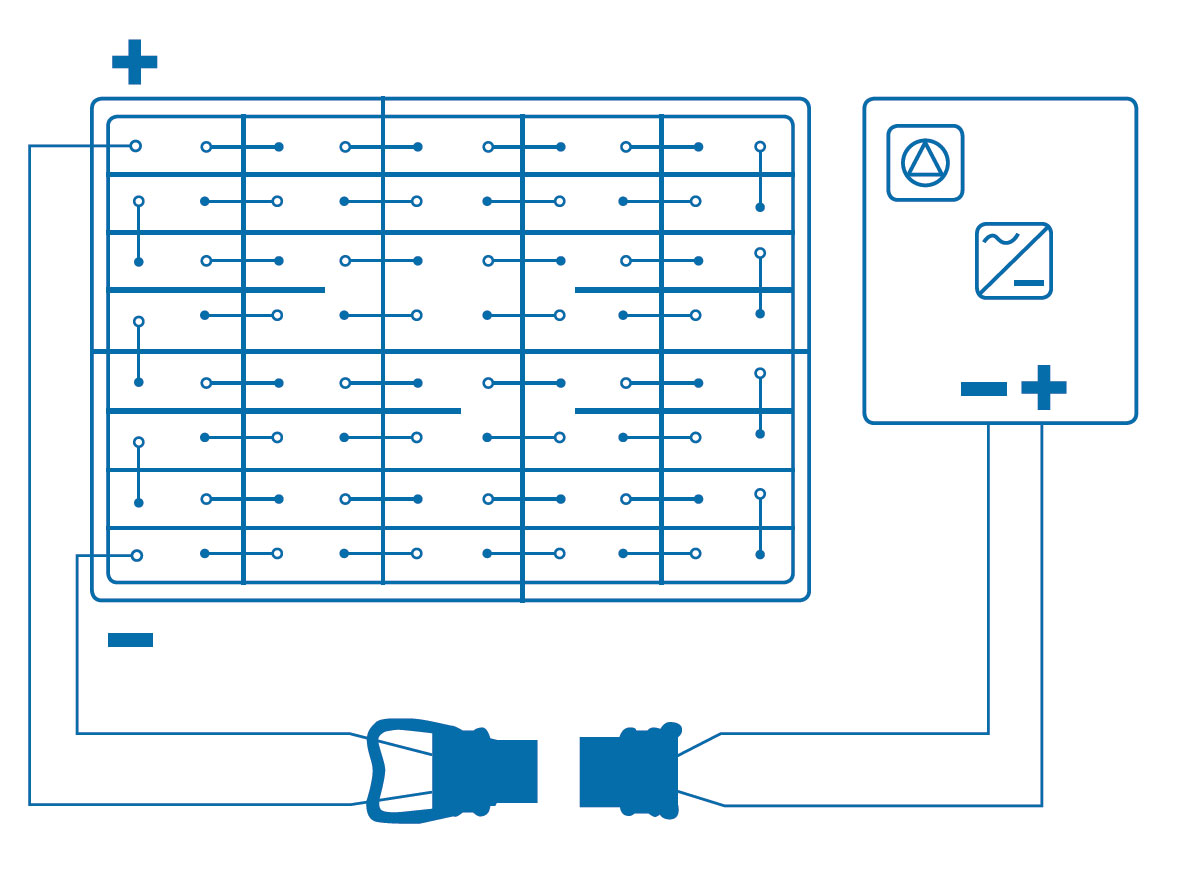 EUW Installation auf der Batterie sowie Luftversorgung über das Ladegerät.
EUW Installation auf der Batterie sowie Luftversorgung über das Ladegerät.
Expert battery disposal
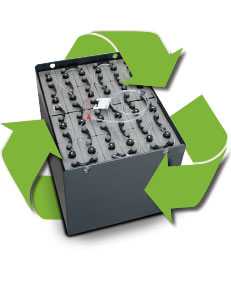 Used batteries must be disposed separately from household waste and recycled (EWC 160601).
Used batteries must be disposed separately from household waste and recycled (EWC 160601).
The EU battery directive (2008/103/EC) and relevant national provisions (here: Battery Act) specify how to proceed with used batteries. Please contact the manufacturer of your battery to schedule return and disposal of the used battery or commission a local disposal specialist.
Have you purchased a new forklift battery and are now searching for a lucrative disposal option for your old battery?
Take advantage of our scrap lead disposal request
Commissioning filled and charged batteries
(See separate provision for commissioning unfilled batteries.)
The battery must be inspected to ensure flawless mechanical condition. The battery end cables must be safely connected and with correct polarity, otherwise battery, vehicle and charger may be destroyed. Torque for pole screws of the terminals and connectors:
![]()
The electrolyte level must be checked. It must be ensured that this level is above the cell baffle or the top edge of the separator.
Batteries must be charged as described in the Section Charging.
Refill the electrolyte with purified water to the nominal level.
For the operation of traction batteries, DIN EN 0272-3 “Drive batteries for electric vehicles”.Charging and discharging a forklift battery correctly
Discharging:
Ventilation openings may not be covered or closed. Electrical connections (for example plugs) may only be opened and closed when the system is switched off. To achieve optimal service life, prevent discharges of more than 80% of the nominal capacity during normal operations (deep discharges). This corresponds to a minimal electrolyte density of 1.13 kg/l at the end of the discharge. Discharged batteries must be charged immediately. This also applies for partially discharged batteries.
Charging:
Batteries may only be charged with direct current. All charging procedures as per DIN 41773 and DIN 41774 are permitted. Connections may only be made with the allocated charging device permitted for the respective battery size to prevent overcharges of the electric lines and contacts, prohibited gas formation and discharge of electrolyte from the cells.
In the gassing area, the current limits as per DIN EN 50272-3 may not be exceeded. If the charging device was not acquired together with the battery, it is recommended to have the customer service inspect it for proper suitability.
Proper exhaust of the charging gases must be ensured during the charging process. Open or remove trough lids or covers of battery installation spaces. The plugs remain on the cells and remain closed. The battery must be connected to the charging device in the correct polarity order (plus to plus, minus to minus). Then switch on the charger.
During the charging process, the electrolyte temperature rises by approx. 10°C. Therefore, begin charging only once the electrolyte temperature is below 45°C. The electrolyte temperature of batteries should be at least +10°C before charging. Otherwise, the battery cannot charge properly.
The charging process is complete once the electrolyte density and battery voltage remain constant over a period of 2 hours.
Equalization charge:
Equalization charges are used to ensure the service life and preserve the capacity of the battery. They are required after deep discharges, after repeated insufficient charging cycles and after charging as per the IU characteristic curve. Equalization charges must be performed after normal charging cycles. The charging power may not exceed 5A/100Ah nominal capacity (end of charging process, see Charging section).
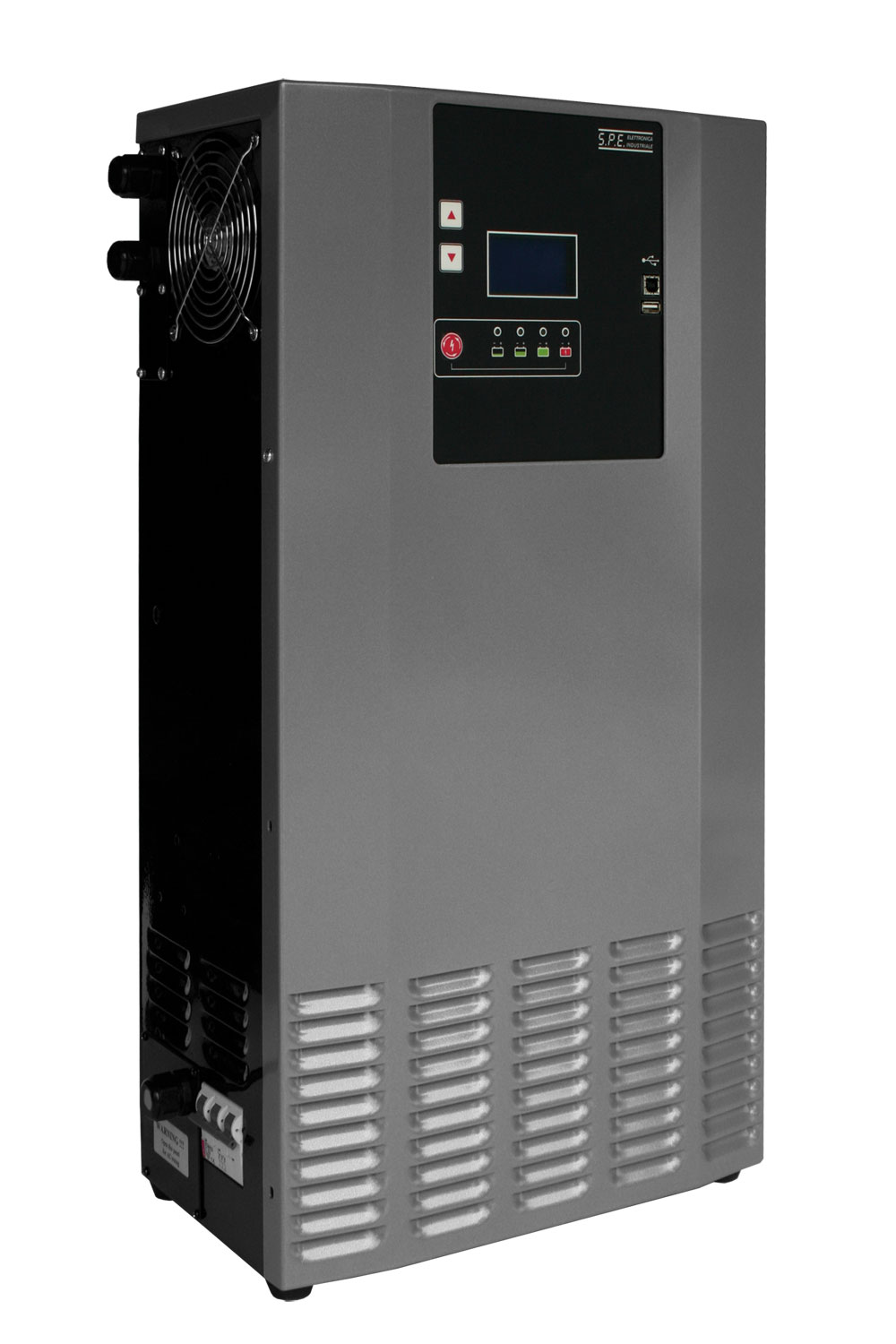
Correct storage of forklift batteries
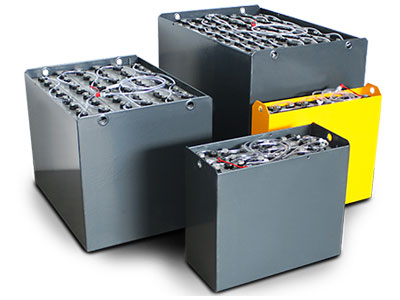 If batteries are decommissioned for a longer period of time, they must be stored fully charged in a dry, frost-free location.
If batteries are decommissioned for a longer period of time, they must be stored fully charged in a dry, frost-free location.
You may use the following charging approaches to ensure that the battery is ready for operation:
- Monthly equalization charge
- Conservation charges at a charging voltage of 2.23V x number of cells. The storage period is a factor to be considered when it comes to the life cycle of the battery.
The right maintenance and care for vehicle drive batteries
| daily | 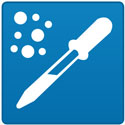 1. Measure electrolyte density |
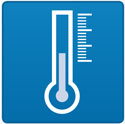 2. Measure temperature (temperature sensor recommended) |
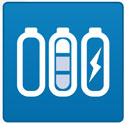 3. Charge battery |
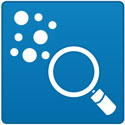 4. After charging, check electrolyte level (electrolyte level sensor recommended) |
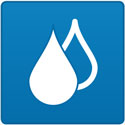 5. After charging, refill with purified water (water refill system recommended) |
| weekly | 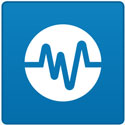 1. Perform equalization charge |
||||
| monthly | 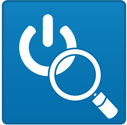 1. Check functionality of the charging rectifier |
 2. Measure electrolyte density (after charging) |
 3. Measure temperature (after charging) |
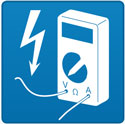 4. Measure cell tension (after charging) |
 5. Clean battery and check for damages |
| annually | In accordance with DIN VDE 0117, the insulation resistance of the vehicle and of the battery must be inspected as required but at least once annually by a qualified electrician. | ||||
Open the battery space of the forklift before charging the battery.
Please ensure that the space is sufficiently ventilated.
No smoking and open fire in the vicinity of the battery: Danger of explosion!
Leave the battery connected to the charging device until it shuts down automatically. If the charging process has to be interrupted, switch off the charging device before disconnecting it.
Towards the edge of the charging cycle, fill the battery to the nominal level.
After the first charge, please refill distilled water (DIN 43540) - refilling with sulfuric acid is not permitted!
Use only special, insulated tools to perform installation tasks on the battery.
Always keep the battery dry and clean to prevent residual current.
Damages to the trough insulation must be repaired after cleaning to ensure insulation values in accordance with DIN EN 50272-3 and prevent trough corrosion. Where required to uninstall the cells, it is recommended to contact customer service.
Information for batteries with Aquamatic:
Fill the battery immediately after charging while at operating state temperature: once per week during single-shift operation, every three days for multi-shift operation.
Monitor the fill level until the end and wait until the flow-through indicator stands still. Disconnect filling device and battery after that.
Cleaning traction batteries
A clean battery is absolutely indispensable - not only for appearance reasons but instead to prevent accidents and property damage and ensure an increased service life and availability of the batteries. Cleaning batteries and troughs is necessary in order to maintain the required insulation of the cells towards each other, towards the ground or foreign conductive parts. In addition, regular cleaning prevents damage due to corrosion and residual currents.
The insulation resistance of traction batteries must be at least 50Ω per Volt nominal voltage as per DIN EN 50272-3. The insulation resistance for batteries for electric forklift trucks may not be lower than 1000Ω as per DIN EN 1175-1.
The battery is electric equipment with led-through connections which are touch-protected by insulation covers. However, that is not the same as an electric insulation as voltage occurs between the poles and connections which are led through an electric non-conductive plastic cover. Depending on the place and duration of battery use, a certain amount of dust depositing on the battery cannot be prevented. Low quantities of discharged electrolyte particles during battery charging above the gassing voltage will form a layer with weak conduction on the cells or block covers.
Residual current then flows through this layer, resulting in increased and different self-discharge of the individua cells and/or block batteries.
That is one of the reasons why the drivers of electric vehicles complain about a lack of capacity after the battery stood still over the weekend. Where higher residual currents flow, electric sparks may occur which could lead an explosion of the charging gas (electrolytic gas) being discharged from the cell plugs or cell valves.
Therefore, clean batteries are not only required to secure availability but are also an essential component of adhering to accident prevention regulations.
Please observe the following information accordingly:
1. Please observe the danger information included in the operating instructions for traction batteries.
2. Dismount the battery from the vehicle for cleaning.
3. Select the cleaning location as such that any wash water containing electrolytes is guided to a suitable wastewater treatment system. When disposing of used electrolytes and/or wastewater, please observe the work protection and accident prevention regulations as well as any applicable wastewater and waste regulations.
4. It is mandatory to wear protective goggles and protective clothing.
5. The cell plugs may not be removed or opened but must keep the cells closed. The cleaning specifications of the manufacturer must be observed.
6. The plastic parts of the battery, especially cell containers, may only be cleaned using water or water-soaked cleaning cloths without any additives.
7. After cleaning, dry the battery surface with suitable means, for example with compressed air or cleaning cloths.
8. Any liquid which may have entered the trough must be suctioned off and disposed in compliance with the previously mentioned regulations. (For details, refer to DIN EN 50272-3 or the ZVEI Info Sheet: “Precautions when handling electrolyte for lead accumulators”.
In order to prevent damages to plastic parts, such as cell covers, cell connector insulation or plugs, while cleaning, please observe the following aspects:
1. The cell connectors must be tightly plugged in or fully tightened.
2. The cell plugs must be closed.
3. No cleaning additives may be used.
4. The max. permitted temperature setting for the cleaning device is: 140°C which generally ensures that a temperature of 60°C is not exceeded at a distance of 30 cm behind the outlet nozzle.
5. The distance of the outlet nozzle of a blast cleaner from the battery surface should be at least 30 cm.
6. The max. operating pressure is 50 bar.
7. The batteries must be blasted generously to prevent local overheating.
8. Do not blast the same spot for longer than 3 seconds. After cleaning, dry the battery surface with suitable means, for example with compressed air or cleaning cloths.
9. No heat guns with open flames or glow wires may be used.
10. The surface temperature of the battery may not exceed max. 60°C.
11. Any liquid which may have entered the trough must be suctioned off and disposed in compliance with the previously mentioned regulations. (For details, refer to DIN EN 50272-1, Section 10.3 and 14 or the ZVEI Info Sheet: “Precautions when handling electrolyte for lead accumulators”).
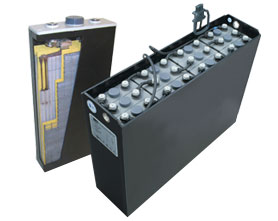
Repair and regeneration of forklift batteries
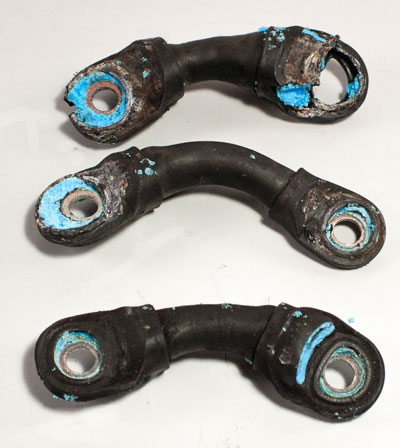 Approx. 80% of forklift batteries categorized as defective are simply sulfated and can be regenerated. We will regenerate your sulfated battery through our expert staff, special procedures for reducing sulphate and the use of modern analysis tools. That way, you can save a lot of money compared with the purchase of a new battery. Contact us and we will help you find a customized and cost-effective solution.
Approx. 80% of forklift batteries categorized as defective are simply sulfated and can be regenerated. We will regenerate your sulfated battery through our expert staff, special procedures for reducing sulphate and the use of modern analysis tools. That way, you can save a lot of money compared with the purchase of a new battery. Contact us and we will help you find a customized and cost-effective solution.
Safety information for forklift batteries (lead batteries with positive tubular plates type PzS / PzB)
 Please observe the operating instructions and mount well visibly at the loading location
Please observe the operating instructions and mount well visibly at the loading location
Work on batteries may only be performed after instruction from expert staff!
 Always wear protective goggles and clothing when working on batteries!
Always wear protective goggles and clothing when working on batteries!
Follow the accident prevention regulations as well as DIN EN 50272-3, DIN 50110-1!
 No smoking!
No smoking!
No open flame, embers or sparks in the vicinity of the battery, otherwise risk of explosion and fire!
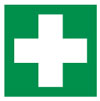 Thoroughly rinse acid splatters in the eye or on the skin with lots of clear water.
Thoroughly rinse acid splatters in the eye or on the skin with lots of clear water.
Then see a doctor immediately.
Thoroughly wash clothing contaminated with acid.
 Avoid danger of explosion and fire as well as short circuits!
Avoid danger of explosion and fire as well as short circuits!
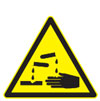 Electrolyte is very acidic!
Electrolyte is very acidic!
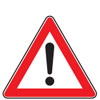 Do not tilt the battery!
Do not tilt the battery!
Only use permitted lifting and transport devices, such as lifting gear in accordance with VDI 3616. Lifting hooks may not damage cells, connectors or connection cables!
If the operating instructions are not followed, repairs are performed with non-original spare parts, or in case of unauthorized access or application of additional electrolytes (alleged enhancing agents), the warranty claim will be forfeited.
Malfunctions on the battery or charger
If malfunctions are detected on the battery or charger, customer service must be informed immediately. Performance data as per 3.3 make troubleshooting and malfunction clearance easier.
Concluding a service agreement with us will make it easier to detect malfunctions in time.
AKKU SYS Akkumulator- und Batterietechnik Nord GmbH
Phone: +49 4101 376760
Mail: info@akkusys.de 